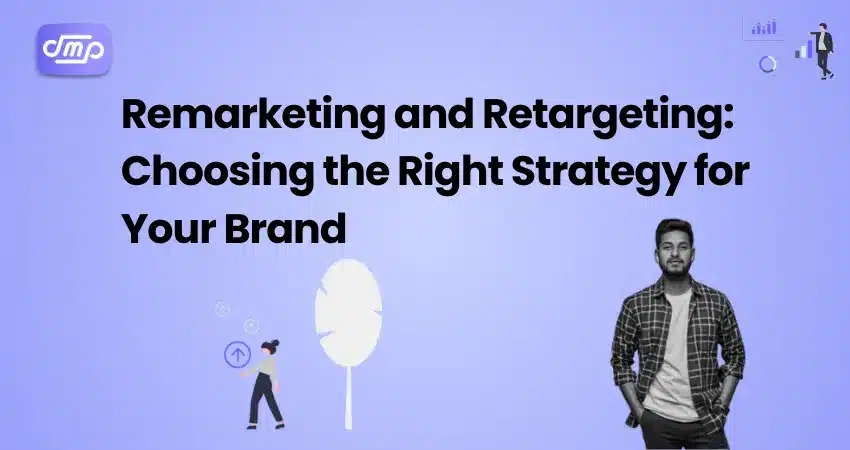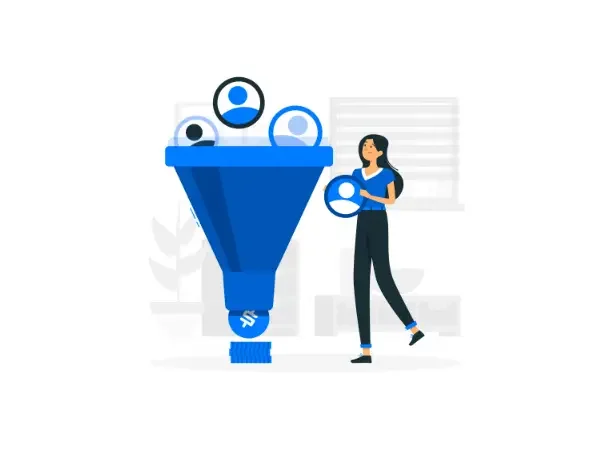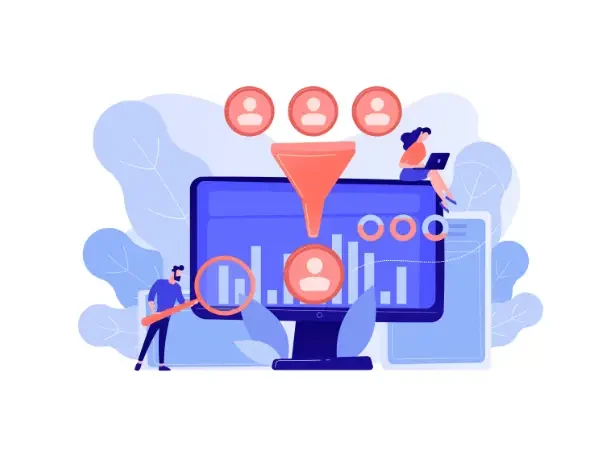
- February 5, 2025
- Digital Marketing, seo
- Digital Marketing
Table of Contents
Remarketing and retargeting are two effective digital marketing tactics for re-engaging new and existing customers. While they are frequently used interchangeably, they provide distinct functions and act via different routes.
Retargeting involves showing advertising to users who have previously visited your website but did not complete a desired activity, such as making a purchase. It primarily uses cookies and pixels to track visitors and display relevant advertisements on platforms such as Google Display Network and social media.
Remarketing, on the other hand, entails re-engaging previous clients or website visitors via email marketing. It often targets customers who have already interacted with your company, such as those who abandoned their shopping cart or subscribed to a newsletter and sends them tailored emails to drive conversions. Both methods seek to enhance conversions and brand remember, but their approaches and executions differ dramatically.
What is Retargeting?
Retargeting is a digital marketing approach that involves delivering adverts to visitors who have previously visited your website but did not complete a desired action, such as purchasing, signing up, or filling out a form.
How Does Retargeting Work?
- Tracking Users with Cookies and Pixels:When a visitor arrives at your website, a small bit of code (a pixel) is stored in their browser, allowing marketers to follow their behavior.
- Serving Targeted adverts:After leaving your website, these users will see your adverts on platforms such as Google Display Network, Facebook, Instagram, LinkedIn, and other websites they visit.
- Encouraging Return Visits:The idea is to remind users of your brand and encourage them to return and complete the task they had abandoned.
Common Retargeting Channels
- Display adverts are banner adverts that appear on third-party websites through the Google Display Network.
- Social media retargeting refers to ads that appear on networks such as Facebook, Instagram, LinkedIn, and Twitter.
- Displaying advertising based on a user’s previous search history.
- Video retargeting entails serving video ads on networks such as YouTube based on previous interactions.
Benefits of retargeting
- Improves Brand Recall: Keeps your brand top-of-mind for potential customers.
- Increases Conversion Rates: Re-engages users who initially expressed interest but did not convert.
- Highly targeted advertising:Delivers tailored ads depending on user activity.
- Cost-effective:Focusing on interested users reduces costs compared to broad-targeting.
Retargeting is perfect for businesses that want to re-engage lost visitors, raise brand awareness, and increase conversion rates with strategically placed adverts.
What is Remarketing?
Remarketing is a digital marketing technique that involves re-engaging previous clients or website visitors via email campaigns and other direct communication channels. Its primary purpose is to nurture leads, recover abandoned carts, and encourage repeat purchases.
How Remarketing Works
- Collecting User Data: Businesses collect user information (such as email addresses) through sign-ups, purchases, or form submissions.
- Segmenting Audiences:Users are classified according to their previous interactions, such as browsing history, previous purchases, or abandoned carts.
- Personalized Emails:Targeted emails with product recommendations, discounts, or reminders are sent to motivate users to return and act.
Common remarketing strategies
- Cart Abandonment Emails:Reminding users about things left in their shopping cart.
- Personalized Product Recommendations: Items are suggested based on previous purchases or browsing behavior.
- Loyalty and Re-engagement Campaigns: Offer discounts or special deals to inactive clients.
Birthdays, anniversaries, and seasonal promotions are all examples of event-based communications.
Benefits of remarketing
- Maintains connections with former visits and customers.
- Targeted offers encourage repeat purchases and increase client retention.
- Customizes communication-based on user behavior.
- Uses existing customer data to increase conversion possibilities.
Remarketing is ideal for firms looking to increase client retention, engagement, and lifetime value through tailored email communication.
Key Differences Between Remarketing and Retargeting

While both remarketing and retargeting seek to re-engage potential customers, they differ in execution and goal. Retargeting generally employs cookies and tracking pixels to display advertisements to visitors who have previously visited a website but did not complete a desired activity, such as making a purchase. These adverts run on platforms such as Google Display Network, Facebook, and other websites, reminding users of things they previously visited. Remarketing, on the other hand, aims to re-engage previous clients via email marketing and CRM-based campaigns.
Businesses collect user data, such as email addresses, and use it to send targeted communications like cart abandonment notifications, special discounts, and loyalty incentives to encourage repeat purchases. While retargeting is effective in attracting potential customers back to a website, remarketing also helps to develop connections and increase client retention. Combining the two tactics can result in a powerful marketing funnel that increases conversions and client lifetime value.
When Should You Use Retargeting Versus Remarketing?
Retargeting is useful when you want to bring back first-time visitors who did not convert while also keeping your brand top-of-mind through adverts. Remarketing is useful when you wish to reconnect with previous consumers through targeted emails and drive repeat purchases.
Both remarketing and retargeting can be combined to create a comprehensive conversion and customer retention plan. Both remarketing and retargeting can help businesses re-engage potential clients, however, the best technique depends on your marketing objectives:
Use Retargeting When:
- You want to bring back first-time visitors who did not convert.
- You want to boost brand awareness through recurrent ad exposure.
- You wish to display tailored adverts based on your browsing habits.
- Your goal is to recover abandoned carts by reminding users of the things they looked at.
- You want to reach a larger audience via platforms such as Google Display Network, Facebook, and Instagram.
Use Remarketing When:
- You want to re-engage previous customers and encourage repeat purchases.
- Your company relies on email marketing to increase conversions.
- You want to establish client loyalty with unique bargains and personalized offers.
- You have to cultivate leads over time, such as sending follow-up emails to users who have downloaded a resource or signed up for a free trial.
- You wish to send cart abandonment emails to remind users of incomplete purchases.
Businesses should use both remarketing and retargeting to create an effective marketing plan, with advertisements attracting new customers back to the website and email campaigns keeping existing customers engaged.
Best Practices for Remarketing and Retargeting

To maximize conversions and consumer engagement, firms should follow these best practices when adopting remarketing and retargeting tactics.
- Segment your audience: Users are classified depending on their activity, such as product visitors, cart abandoners, and previous customers. Customize messaging for each category to increase relevance and engagement.
- Set the frequency caps: Avoid overloading users with too many adverts or emails. To avoid ad fatigue, limit how many times a user sees your ad per day.
- Use Dynamic Ads to Personalize: Use dynamic retargeting to display the precise products that customers browsed. Personalize email content by recommending products based on browsing history.
- Develop compelling and actionable CTAs: Use powerful Call-to-Actions (CTAs) like “Claim Your Discount,” “Complete Your Purchase,” or “Come Back & Save” to increase conversions. Try multiple CTA versions to see what works best for your audience.
- Optimize for mobile users: To reach customers on several devices, make sure your advertising and emails are mobile-friendly. Use responsive design for emails and landing pages to enhance the user experience.
- Exclude converted users from retargeting ads: Once a user has made a purchase, cease showing them the same advertising. Instead, direct them to a remarketing campaign that includes loyalty offers or cross-sell advice.
- Test and Optimize: Conduct A/B tests on ad creatives, messaging, and email subject lines to optimize performance. Monitor conversion rates and change methods to maximize ROI.
To optimize results, combine remarketing and retargeting strategies. For example, employ retargeting advertisements to re-engage users and remarketing emails to nurture relationships and remarketing emails to build long-term consumer relationships.
Conclusion
Both remarketing and retargeting are effective tactics for re-engaging potential customers and increasing conversions. Remarketing nurtures existing clients through tailored email campaigns, whereas retargeting focuses on drawing back visitors via display and social media ads. Understanding the fundamental differences and following best practices, such as audience segmentation, targeted message, and frequency management, can dramatically boost marketing success.
To achieve the best results, firms should use both strategies—retargeting to re-engage lost visitors and remarketing to deepen client relationships. By doing so, brands can increase engagement, drive revenue, and foster long-term loyalty.











